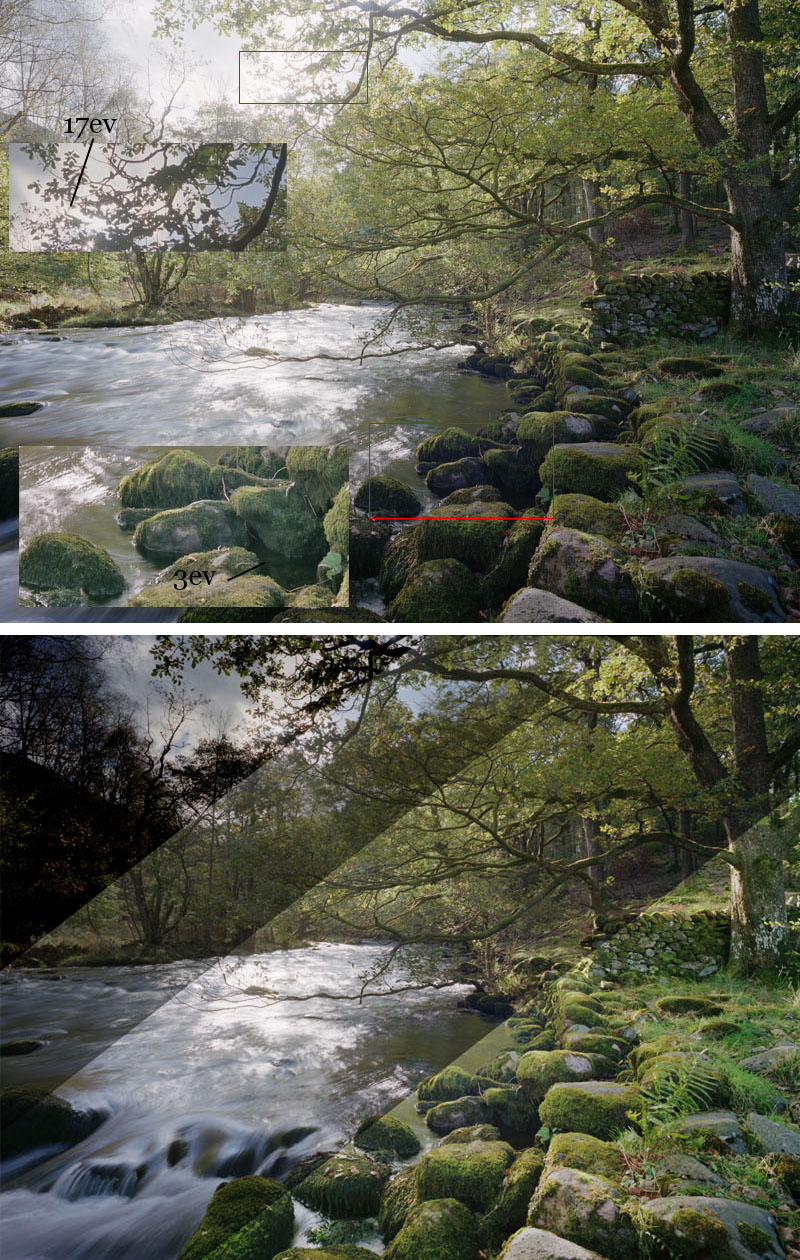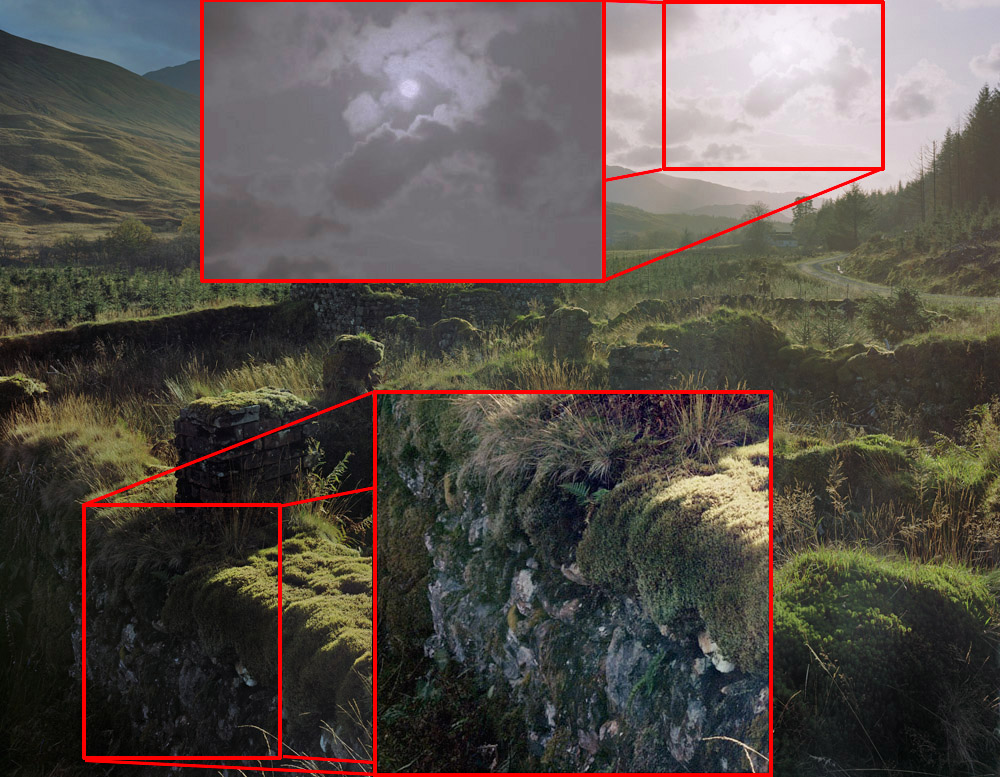For dynamic range I think you'd have to put 8x10 and 5x4 first if you use Portra 400...
This is an old comparison and not particular great scans but I took an OM10 and brackets 10 shots in one stop steps. The scene had a brightness range of 12 stops so in total that is 22 stops across this range. You're possibly losing a stop or two in the shadows so lets call it 20 stops of dynamic range. See the photograph below for a photographic example.
http://static.timparkin.co.uk/static/tmp/portra-all-compensate.jpg
The highlights and shadows get noisy but there is still signal across the whole range...
You misunderstood me. I mean
*PIXEL PEEPING*, with SNR taken into account, not just signal. When you have too much film grain, the details in shadow or highlight are overrun. I know that film has signal over a broad range of dynamic range but I bet the actually usable dynamic range (i.e. the part which gives you good SNR for pixel peeping) would be significantly less, and I bet that would be less than the Sony CMOS sensors (e.g. D800E). I want to see when shooting backlight landscape, i.e. direct sun without cloud, how much detail (by pixel peeping) you can see from the foreground. You could give whatever optimal exposure to the film you want. I had a thread obsessed with pixel peeping for high contrast scenes:
http://www.getdpi.com/forum/medium-...e-photography-realized-say-no-silhouette.html
A good example of backlight landscape is the sunset at Big Ben where an ND grad would cut the buildings and affect the pixel peeping on the building. Below is a picture taken by a Nikon D800, which is severely underexposed to preserve the highlight around the sun, because I have much confidence with the dynamic range of the Sony CMOS sensor:
I continuously shot 60 underexposed frames of the same parameter, each at 100 ISO and 8 seconds (with an ND1000 filter):
Then I batch process these 60 RAW files with the same brutal adjustments in post-processing:
Below shows what to expect from the Sony CMOS sensor - even from a single RAW file the SNR in shadow is still pretty awesome, exceeding the medium format CCDs, and the Canon sensors, by a large margin:
And here is the final output you could expect to get, with very high SNR after stacking 60 frames:
My bet is that the Sony CMOS sensor can overwhelm any other technology (including 8x10, 4x5, IQ180 etc) for such high contrast scenes for pixel peeping everywhere in the picture even with inferior glasses.
If you are interested in accepting a challenge please give me a call and I will bring a Sony CMOS sensor (D800E or IQ250) to compare side by side against your 8x10, with whatever optimum exposure you can get from it. Remember that the challenge here is about pixel peeping (with SNR taken into account), not just signal. Feel free to scan it towards any resolution beyond the Sony CMOS sensor - let's see which has got more details for pixel peeping!










